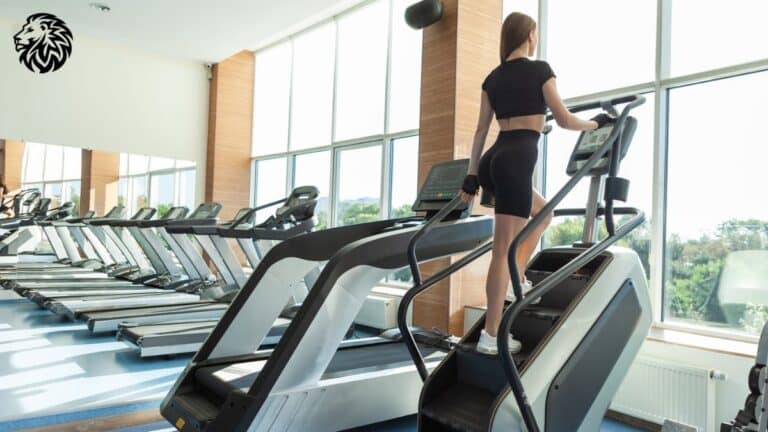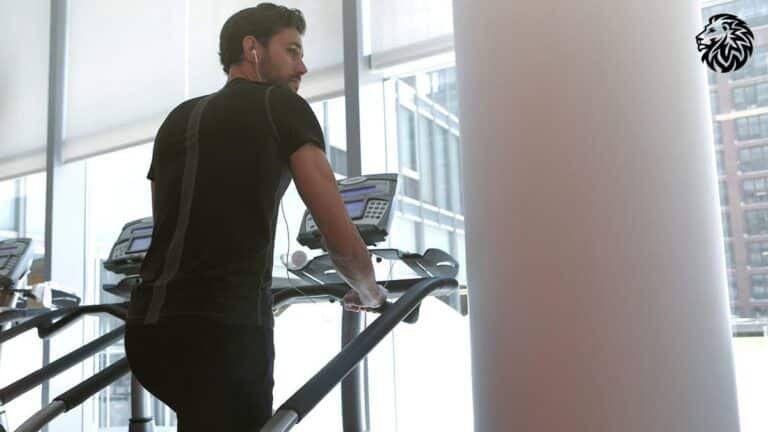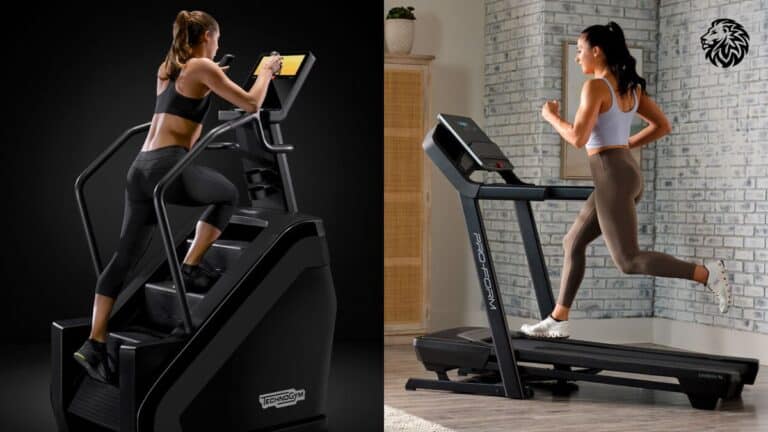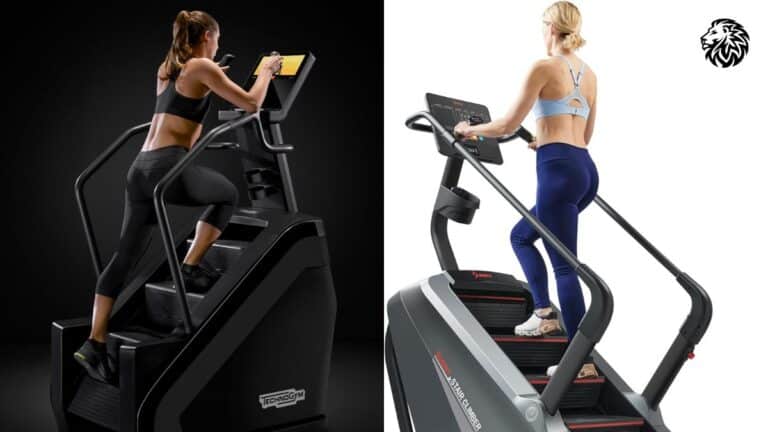In the pursuit of weight loss and improved fitness, individuals often explore various exercise machines and routines, seeking an effective and sustainable path to achieving their health goals. Among the myriad of options available, the stair climber emerges as a powerful ally in the weight loss journey. This machine, designed to simulate the action of climbing stairs, offers a unique combination of cardiovascular and strength training, making it an exceptional tool for those looking to shed pounds and enhance their overall fitness.
The stair climber not only aids in burning a significant number of calories but also targets several key muscle groups, providing a comprehensive workout. Its versatility allows users of all fitness levels to benefit, from beginners taking their first steps towards a healthier lifestyle to seasoned athletes seeking to intensify their training. In this article, we will delve into the various benefits of incorporating a stair climber into your fitness regimen, exploring how this single piece of equipment can elevate your weight loss game and contribute to a fitter, healthier you.
Understanding the Stair Climber

What is a Stair Climber?
A stair climber is a fitness machine designed to simulate the action of climbing stairs, a common yet effective physical activity. This piece of equipment typically features a set of rotating steps or pedals that move in response to the user’s effort, creating a continuous stair-climbing experience. The user can adjust the speed and resistance to match their fitness level, making it a versatile tool for a wide range of users.
Types of Stair Climbers
- Step Mills: Resembling an escalator, step mills have a set of rotating steps. This type provides a more realistic stair-climbing experience, closely mimicking the action of climbing actual stairs. It’s excellent for those seeking a high-intensity, full-body workout.
- Pedal-Based Climbers: These climbers consist of two independent pedals that move up and down. The user stands on these pedals and simulates a stepping motion. These machines are generally more compact and focus more on the lower body, making them a good choice for those with limited space or specific lower body fitness goals.
Primary Muscles Worked
Stair climbing engages several key muscle groups, primarily in the lower body. The primary muscles worked include:
- Quadriceps: The front thigh muscles are heavily involved in lifting the body with each step.
- Hamstrings: Located at the back of the thigh, these muscles support the climbing motion.
- Glutes: The buttock muscles are engaged extensively, especially when taking larger steps or increasing resistance.
- Calves: These muscles are used to push down on the steps, especially when standing on the balls of the feet.
- Core Muscles: While not as obvious, the core muscles, including the abdominals and lower back, are engaged to maintain balance and posture during the exercise.
In addition to these primary muscle groups, stair climbing also offers cardiovascular benefits, making it an effective exercise for improving overall fitness and aiding in weight loss.
Benefits of Using a Stair Climber for Weight Loss

High-Calorie Burn: One of the most significant advantages of using a stair climber is its ability to burn a substantial amount of calories in a relatively short period. Stair climbing is a high-intensity workout that requires significant energy expenditure, making it highly effective for weight loss. The combination of continuous leg movement and resistance against gravity means the body has to work harder, leading to more calories burned compared to many other forms of exercise.
Muscle Building and Fat Loss: Stair climbing is not just a cardiovascular workout; it also serves as a strength-training exercise, particularly for the lower body. By building muscle in the legs, glutes, and core, the stair climber helps increase lean muscle mass. More muscle mass leads to a higher resting metabolic rate, meaning your body burns more calories even when at rest. This muscle building is crucial for long-term fat loss and overall body toning.
Cardiovascular Benefits: Regular use of a stair climber significantly enhances cardiovascular fitness. This form of exercise challenges the heart and lungs, encouraging them to work harder to supply oxygen to the working muscles. Over time, this can lead to improved heart and lung function, reduced blood pressure, and a lower risk of heart disease. It’s an excellent way to boost overall endurance and stamina.
Low Impact on Joints: For individuals seeking a high-intensity workout with a lower risk of joint strain, the stair climber is an ideal choice. Unlike running or other high-impact exercises, stair climbing is relatively low impact. The machine provides a smooth motion that minimizes stress on the knees, hips, and ankles. This aspect makes it particularly beneficial for those with joint issues or for individuals who are overweight and looking to start an exercise regimen without overburdening their joints.
How to Incorporate the Stair Climber into Your Routine

For Beginners: Starting a Stair Climbing Routine
- Start Slow: Begin with a short duration, like 5-10 minutes, and a comfortable speed. Gradually increase the time as your endurance improves.
- Focus on Frequency: Aim to incorporate stair climbing 2-3 times a week. Consistency is key in building stamina and strength.
- Monitor Your Form: Maintain an upright posture, lightly hold the handrails for balance (not for support), and ensure your entire foot lands on the step.
- Listen to Your Body: If you feel overly fatigued or experience pain, take a break. It’s essential to avoid overexertion.
For Intermediate Users: Enhancing Your Workout
- Increase Duration and Intensity: Gradually extend your workout time to 20-30 minutes and experiment with faster speeds or higher resistance.
- Incorporate Intervals: Mix periods of high intensity with recovery periods. For example, 2 minutes of fast climbing followed by 1 minute of slower pace.
- Add Variety: Change your step pattern (e.g., skipping steps for a deeper leg workout) or use the random program setting for a varied routine.
For Advanced Users: Maximizing the Challenge
- High-Intensity Interval Training (HIIT): Alternate between extremely high-intensity climbing for short bursts and brief periods of rest or slow climbing.
- Longer Durations: Aim for extended sessions, up to 45 minutes to an hour, to build endurance.
- Additional Challenges: Consider wearing a weighted vest or using ankle weights to increase resistance and strength training benefits.
Maintaining Proper Form
- Posture: Keep your back straight, shoulders back, and look forward. Avoid leaning too far forward as this can reduce the workout’s effectiveness and strain your back.
- Foot Placement: Place your whole foot on the step. This ensures a full range of motion and better muscle engagement.
- Arm Movement: Use the handrails only for balance. Swinging your arms naturally, as you would when climbing real stairs, can increase calorie burn and engage your upper body.
- Breathing: Breathe deeply and rhythmically to ensure adequate oxygen flow to your muscles.
Incorporating these strategies into your routine can help you maximize the benefits of the stair climber and reduce the risk of injury, making your workouts more effective and enjoyable.
Enhancing Your Stair Climber Workouts

Increasing Intensity
- Adding Weights: Wearing a weighted vest or using ankle weights can significantly increase the intensity of your workout. This added weight forces your muscles to work harder, enhancing strength and endurance.
- Varying Speed: Alternating between fast and slow climbing speeds challenges your body differently throughout the workout. Fast speeds boost cardiovascular health, while slower speeds with higher resistance can build muscle strength.
- Adjusting Resistance: Increasing the resistance level makes each step more challenging, requiring more effort and thus burning more calories.
- Changing Step Patterns: Try different stepping styles, such as taking two steps at a time for a more intense leg workout or side stepping to target different muscle groups.
Interval Training
- Implementing HIIT: High-Intensity Interval Training on a stair climber is highly effective for burning fat and improving cardiovascular health. Alternate between short, intense bursts of high-speed climbing and slower recovery periods.
- Custom Intervals: Create custom interval sessions that suit your fitness level. For example, 1 minute of high-intensity climbing followed by 2 minutes of moderate-paced climbing, repeating for 20-30 minutes.
- Progressive Intervals: As you get fitter, shorten the rest periods and increase the length or intensity of the high-intensity intervals.
Tracking Progress
- Set Clear Goals: Whether it’s weight loss, improved endurance, or muscle strength, having clear objectives helps in tracking progress.
- Use Fitness Trackers: Many modern stair climbers come with built-in trackers that monitor steps, calories burned, and workout duration. Wearable fitness trackers can also be useful.
- Keep a Workout Log: Document each workout, noting the duration, intensity, and any changes in your routine. This record will help you see your improvement over time.
- Monitor Physical Changes: Regularly measure your weight, body measurements, and take note of any increases in strength or endurance.
- Pay Attention to How You Feel: Notice improvements in how you feel during and after workouts, such as increased energy levels, better sleep, or improved mood.
By enhancing your stair climber workouts with these strategies, you can maximize your results, making each session more effective and keeping your routine engaging and challenging.
Combining Stair Climbing with Overall Fitness and Nutrition

Integrating Stair Climbing with Other Exercises
- Comprehensive Fitness: While stair climbing is excellent for cardiovascular health and lower body strength, incorporating other forms of exercise like weight training, yoga, or swimming can ensure a well-rounded fitness regimen. This variety targets different muscle groups and prevents workout boredom.
- Balancing Workouts: Pair stair climbing with upper body strength training or flexibility exercises like yoga. This helps in achieving a balanced muscular development and reduces the risk of overuse injuries.
- Cross-Training: Engage in activities like cycling or swimming on alternate days. This cross-training approach improves overall fitness and aids in muscle recovery.
Role of a Balanced Diet in Weight Loss
- Fueling Your Body: A balanced diet is crucial in providing the energy needed for stair climber workouts. Carbohydrates provide quick energy, while proteins are essential for muscle repair and growth.
- Weight Loss Efficiency: Combining exercise with a balanced diet enhances weight loss efforts. While exercise burns calories, a healthy diet ensures you are not consuming more calories than you burn.
- Nutritional Balance: Focus on a diet rich in fruits, vegetables, lean proteins, whole grains, and healthy fats. This balance is key to maintaining energy levels and supporting overall health.
Nutrition Tips to Complement Stair Climbing
- Pre-Workout Nutrition: Consume a light snack rich in carbohydrates and protein about 30-60 minutes before your workout. This could be a banana with peanut butter or a small yogurt with berries.
- Hydration: Drink plenty of water before, during, and after your workout to stay hydrated. Stair climbing can be intense, and proper hydration is essential for optimal performance and recovery.
- Post-Workout Recovery: After your workout, eat a meal or snack that includes proteins and carbohydrates to aid in muscle recovery and replenish energy stores. For example, grilled chicken with quinoa or a protein shake with fruit.
- Mindful Eating: Pay attention to portion sizes and eating habits. Mindful eating helps in recognizing true hunger and fullness, which is essential for weight management.
- Consistency: Consistent, balanced eating habits complement the regular physical activity of stair climbing, leading to better weight loss and fitness results.
Incorporating stair climbing into a broader fitness and nutrition strategy creates a synergistic effect that can lead to more effective and sustainable weight loss and health benefits.
Common Mistakes to Avoid

Using a stair climber can be highly effective for fitness and weight loss, but it’s essential to use it correctly to avoid common mistakes that can reduce its effectiveness or lead to injury.
1. Leaning Too Much on the Handrails
- Mistake: Leaning heavily on the handrails reduces the workout’s intensity, as it takes some of the weight off your legs.
- How to Avoid: Use the handrails only for balance. Maintain an upright posture, engaging your core to ensure your legs do the work.
2. Incorrect Foot Placement
- Mistake: Placing only the front part of the foot on the steps can strain the calves and lead to an incomplete workout.
- How to Avoid: Place your entire foot on the step. This ensures a full range of motion and better muscle engagement.
3. Not Varying Your Routine
- Mistake: Repeating the same workout can lead to a fitness plateau and reduced motivation.
- How to Avoid: Change your routine regularly by adjusting speed, resistance, and duration. Incorporate intervals or different step patterns to keep the workout challenging.
4. Ignoring Body Alignment
- Mistake: Slouching or hunching over the machine can lead to back pain and reduced effectiveness.
- How to Avoid: Keep your back straight, shoulders back, and head up. Proper alignment ensures a more effective workout and reduces the risk of injury.
5. Skipping the Warm-up and Cool-down
- Mistake: Jumping straight into a high-intensity workout without warming up or skipping the cool-down phase can increase the risk of injury.
- How to Avoid: Start with a 5-10 minute low-intensity warm-up and end with a cool-down period to gradually bring your heart rate back to normal.
6. Overestimating Capabilities
- Mistake: Starting with too high intensity or duration can lead to exhaustion or injury.
- How to Avoid: Begin at a lower intensity and gradually increase as your fitness level improves. Listen to your body and don’t push too hard too fast.
7. Inconsistent Workouts
- Mistake: Sporadic use of the stair climber diminishes its effectiveness.
- How to Avoid: Integrate stair climbing into your regular fitness routine, aiming for consistent workouts several times a week.
By being aware of these common mistakes and actively working to avoid them, you can ensure that your stair climber workouts are safe, effective, and beneficial for your fitness journey.
Choosing the Right Stair Climber

Selecting the appropriate stair climber machine, whether for home or gym use, is crucial for ensuring a comfortable, effective, and enjoyable workout experience. Here are key factors to consider and popular models to explore.
1. Space and Placement
- Home Use: Consider the space available in your home. Some stair climbers are quite large (like step mills), while others have a smaller footprint.
- Gym Use: In a gym setting, size may not be as critical, but it’s still important to choose a machine that fits well within the available space.
2. Types of Stair Climbers
- Step Mills: Best for those seeking a challenging, full-body workout. They require more space and are typically more expensive.
- Pedal-Based Climbers: Ideal for smaller spaces and focus mainly on the lower body. They are generally more affordable.
3. Features to Consider
- Adjustable Resistance and Speed: Essential for varying workout intensity.
- Stability and Durability: Look for sturdy construction, especially if the machine will be used frequently or by multiple people.
- User Interface: A clear, easy-to-use console for tracking your workout is important. Look for features like heart rate monitoring, calorie count, and programmable workouts.
- Comfort and Ergonomics: Ensure the steps and handrails are comfortable and the machine is easy to mount and dismount.
4. Budget
- Cost-Effectiveness: Higher-end models offer more features but are more expensive. Determine your budget and find a balance between cost and desired features.
5. Popular Models
- For Home Use: Look into compact models like the Bowflex Max Trainer or the StairMaster StepMill SM3 for a more complete experience.
- For Gym Use: Commercial models like the StairMaster 8-Series Gauntlet or the Life Fitness Integrity Series provide durability and advanced features for heavy usage.
6. Reviews and Testimonials
- Research: Read reviews and testimonials from other users to gauge the reliability and effectiveness of different models.
7. Trial and Personal Preference
- Test Before Buying: If possible, try out different models either in a store or at a gym. Comfort, ease of use, and personal preference play significant roles in your long-term commitment to using the machine.
8. Warranty and Maintenance
- Check Warranty: A good warranty can save you money and hassle in the long run. Also, consider the ease of maintenance and availability of customer service.
In summary, choosing the right stair climber involves considering your personal needs, space, budget, and workout goals. A well-chosen stair climber can be a valuable tool in your fitness arsenal, providing years of effective workouts.
Conclusion
Throughout this article, we have explored the stair climber as a multifaceted tool for enhancing weight loss and overall fitness. Key points to remember include:
- Understanding the Stair Climber: Recognizing the types of stair climbers and their specific uses is essential for choosing the right one for your needs.
- Benefits for Weight Loss: The stair climber offers high-calorie burn, muscle building, cardiovascular benefits, and is low-impact, making it an ideal choice for effective weight loss.
- Incorporating into Your Routine: Whether you’re a beginner, intermediate, or advanced user, there are strategies to effectively incorporate the stair climber into your fitness routine.
- Enhancing Workouts: By varying intensity, using interval training, and tracking progress, you can maximize the benefits of your stair climber workouts.
- Overall Fitness and Nutrition: Combining stair climbing with other exercises and a balanced diet is crucial for holistic fitness and optimal weight loss results.
- Avoiding Common Mistakes: Awareness of common mistakes and knowing how to avoid them ensures a more effective and safer workout.
- Choosing the Right Machine: Selecting the appropriate stair climber involves considering factors like space, budget, and personal preference.
As we conclude, it’s important to emphasize the value of integrating the stair climber into your fitness journey. This tool is not just about weight loss; it’s about building strength, enhancing endurance, and improving overall health. The journey towards better health and fitness is a personal one, filled with unique challenges and triumphs. By incorporating the stair climber into your routine, you are taking a significant step towards achieving your health goals. Remember, every step counts, and with perseverance and dedication, the path to a healthier, fitter you is well within your reach.
Frequently Asked Questions
1. How often should I use a stair climber for weight loss?
- Aim for 3-5 times per week, with each session lasting at least 20-30 minutes for effective weight loss. Adjust frequency and duration based on your fitness level.
2. Is stair climbing suitable for beginners in fitness?
- Yes, stair climbing is suitable for beginners. Start with short, low-intensity sessions and gradually increase duration and intensity as your fitness improves.
3. Can stair climbing help in toning the lower body?
- Absolutely! Stair climbing effectively tones the legs, glutes, and calf muscles due to its focus on the lower body.
4. What is the difference between a stair climber and a step mill?
- A stair climber typically has two pedals that move independently, while a step mill has a set of rotating steps, more closely mimicking real stair climbing.
5. How can I prevent knee pain while using a stair climber?
- Ensure proper form by keeping your back straight and not leaning too far forward. Also, start with lower intensity and gradually increase to avoid stressing the knees.
6. Are stair climber workouts effective for cardiovascular fitness?
- Yes, stair climber workouts are excellent for cardiovascular fitness, as they increase heart rate and improve endurance over time.
7. Can using a stair climber aid in weight loss without diet changes?
- While a stair climber can aid in weight loss through calorie burn, combining exercise with a balanced diet is more effective for optimal results.
8. How does stair climbing compare to running in terms of calorie burn?
- Stair climbing can burn a similar amount of calories as running, depending on intensity. It’s generally considered more intense per minute but is lower impact on joints.







